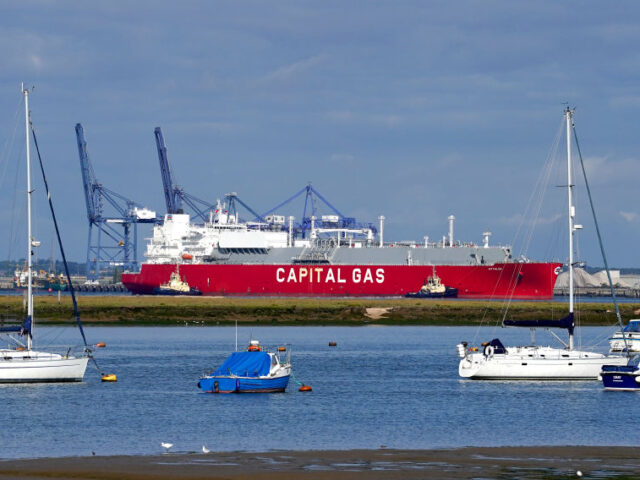The United Kingdom has one of the smallest bunkered reserves of natural gas — burnt to produce heat and electricity — in Europe, yet it is shipping volumes of the resource abroad at levels not seen for years as a cold snap arrives.
Natural gas is being shipped to the continent through an ‘interconnector’ — an underwater gas pipe to Belgium — at the highest rate since 2016, with traders taking advantage of lower gas prices in the United Kingdom and higher in Europe to meet demand, Bloomberg reports. The high flow is a function of the strange imbalance of gas infrastructure across Europe, where many European nations have very high gas storage facilities but limited means to import, while the UK has almost no storage but ample means to import gas from around the world by sea.
Too Late? Foolish Decision to Close Britain’s Biggest Gas Storage Site Reversed Amid Crisis https://t.co/VwScuMa3Vo
— Breitbart London (@BreitbartLondon) December 2, 2022
In effect, this means European nations which have now completely filled their winter reserves are meeting their daily demand by imports instead of dipping into their own holdings while the UK, which has almost no storage capacity, is exporting gas at extremely high speed while in a rational world it would be frantically trying to fill its own storage to guard against winter shocks. As Bloomberg reports, in a normal year gas would typically be burnt in the UK rather than exported in December, and this level of exports to Europe is unusual.
And the cold weather is certainly arriving, with cold arctic air being drawn down over Europe this week sending gas markets soaring again. The Daily Telegraph notes benchmark futures increased as much as 4.3 per cent on the arrival of the first cold snap of the year.
For all Britain’s much-in-demand gas import infrastructure, there is no guarantee it will be able to keep its own gas supply up through winter, with the National Grid reflecting to Bloomberg that: “It’s difficult to forecast exactly which type of supply will turn up on any given day, primarily because flexible supplies are price driven.” That has left bodies like the grid and the government apparently wargaming and preparing for potential rolling blackouts for late winter, when gas reserves are run down everywhere and ability to import fresh energy to the UK may simply not meet demand.
German Gas Official wants Gas ‘Solidarity Pact’ with Britain to Avert Energy Crisishttps://t.co/jRdnultm5r
— Breitbart London (@BreitbartLondon) November 9, 2022
The lack of storage capacity to tide the country over through supply problems is the result of years of government policy founded in the years of plentiful cheap gas supply where it was seen as cheaper and easier to buy gas on the international markets as and when it was needed. Domestic production was run down and storage capacity was never invested in, to the point where Denmark and the UK, which has a population over ten-times that of Denmark, have about the same ability to store gas, about 10 terawatt hours of energy in reserve. When compared to Germany, which has over 240 terawatt hours, it becomes apparent that functionally the UK has no effective energy storage at all.
Such was the disinterest of putting some energy aside to smooth the peaks and troughs of the global energy market, the UK’s largest gas storage site — Rough Gas, which alone accounted for 70 per cent of the whole UK storage capacity — was allowed to close in 2017 because the government refused to spend the money to refurbish it. The facility is now, belatedly, being brought back online, almost certainly too late to fill fully for this winter.
With Rough back online, the UK has just nine days of gas reserves held, compared to Germany’s 89 days.
Trump Vindicated: Germany Braces for 'Chaotic Conditions' Ahead of Feared Loss of Russian Gas https://t.co/CV9t5KSp6t
— Breitbart London (@BreitbartLondon) July 3, 2022

COMMENTS
Please let us know if you're having issues with commenting.